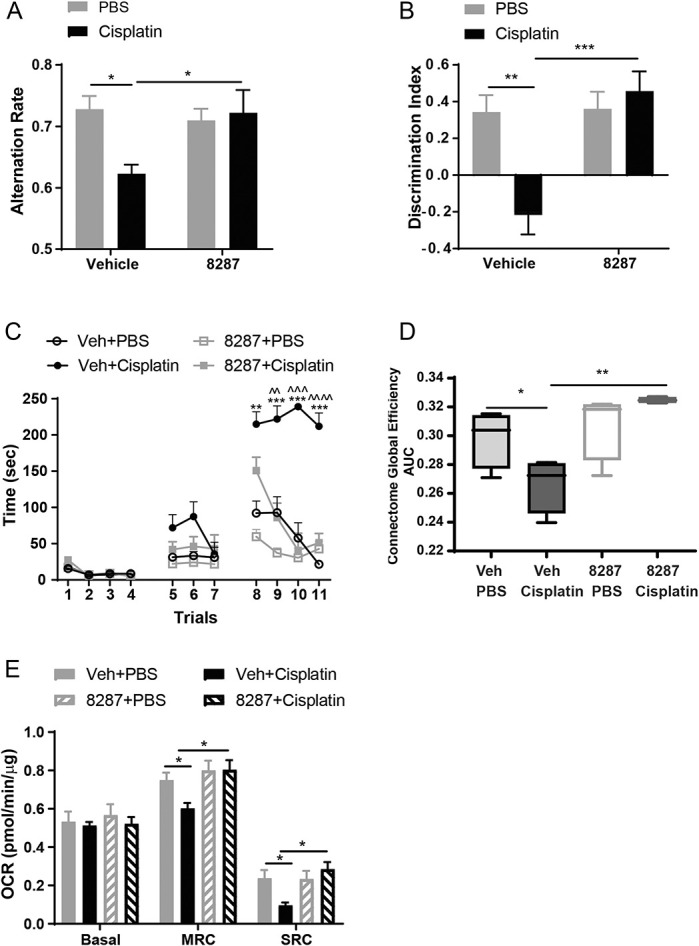Figure 5.

The DLK inhibitor IACS′8287 prevents cisplatin-induced cognitive impairments. Behavioral tests including Y-maze, NOPRT, and the puzzle box tests were started 1 week after the last administration of IACS′8287 and cisplatin. (A) IACS′8287 prevented cisplatin-induced spatial working memory deficits in the Y-maze test. The percentage of perfect alternations (alternation rate) was calculated (n = 12, two-way ANOVA reveals significant main effect on interaction: F (1, 44) = 5.398, P = 0.0251; Tukey post hoc analysis: *P < 0.05). (B) IACS′8287 prevented cisplatin-induced spatial memory deficits in NOPRT. The discrimination index was used as a measure for the preference for the novel object (n = 12, two-way ANOVA reveals significant main effect on interaction: F (1, 44) = 9.598, P = 0.034; Tukey post hoc analysis: **P < 0.01, ***P < 0.0001). (C) IACS′8287 prevented cisplatin-induced impairments in executive functioning tested in the puzzle box test. Trials 1 to 4, the underpass was unobstructed; trials 5 to 7, the underpass was filled with corncob bedding; trials 8 to 11, the underpass was covered by the cardboard plug. The time it took for the mice to enter the goal box was used as an index for executive functioning. (n = 12, two-way ANOVA reveals significant main effect on interaction: F (30, 402) = 12.08, P < 0.0001; Tukey post hoc analysis: **P < 0.01, ***P < 0.001 vs Veh+PBS, ^^P < 0.01, ^^^P < 0.001, ^^^^P < 0.0001 vs IACS′8287+cisplatin). (D) fMRI analysis of connectome global efficiency. IACS′8287 prevented cisplatin-induced disruption of functional connectome global efficiency (n = 4, nonparametric permutation testing, *P < 0.05, **P < 0.01). (E) Oxygen consumption rates were analyzed in isolated synaptosomes using the Seahorse XFe24 Flux Analyzer. Changes induced by cisplatin and IACS′8287 in basal OCR, MRC, and SRC (n = 8, two-way ANOVA reveals significant main effect on interaction: F (1, 28) = 11, P = 0.0025 for MRC; F (1, 28) = 8.933, P = 0.0058 for SRC; Tukey post hoc analysis: *P < 0.05). Results are expressed as mean ± SEM. ANOVA, analysis of variance; DLK, dual leucine zipper kinase; fMRI, resting state functional magnetic resonance imaging; MRC, maximal respiratory capacity.
